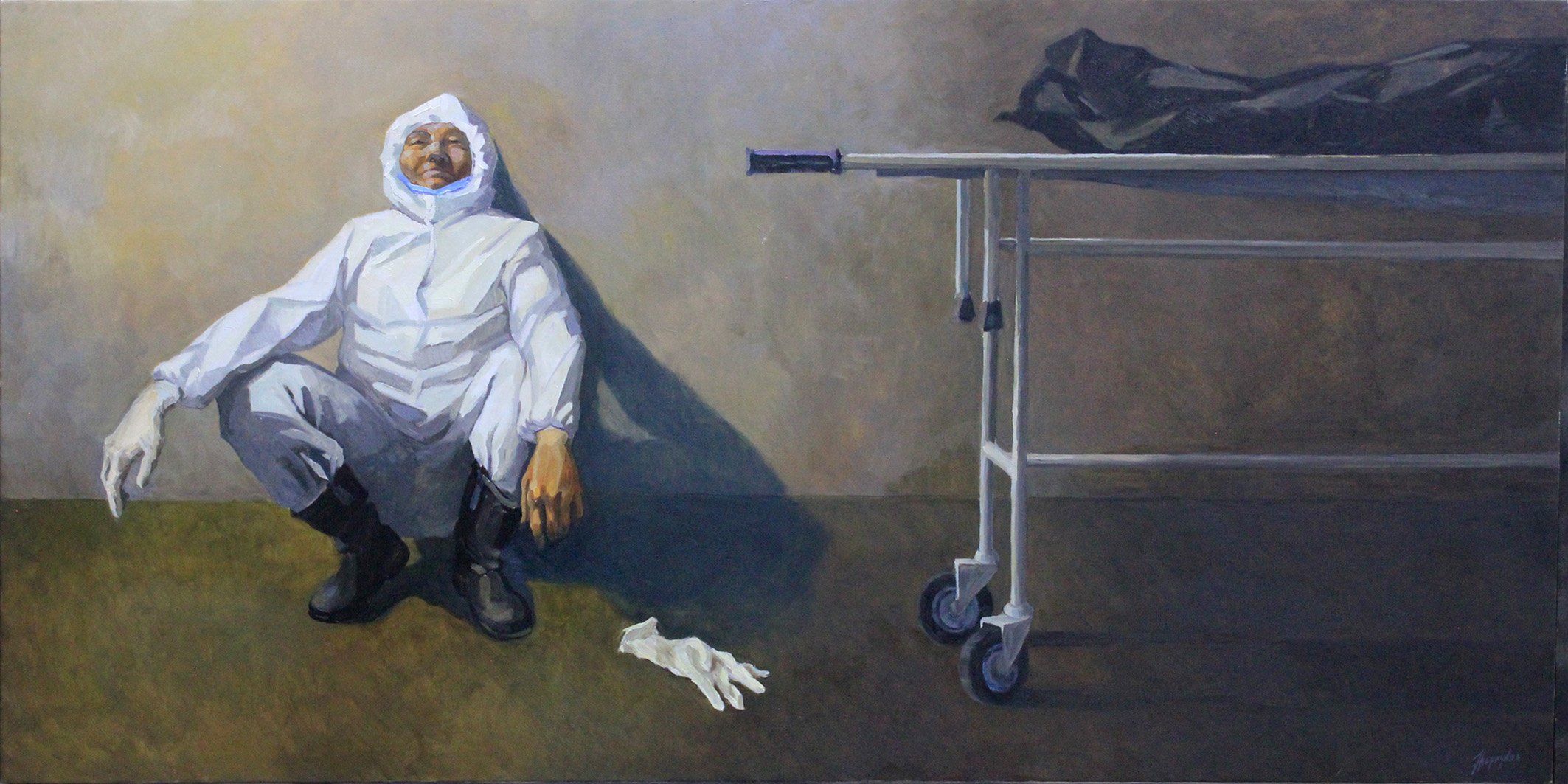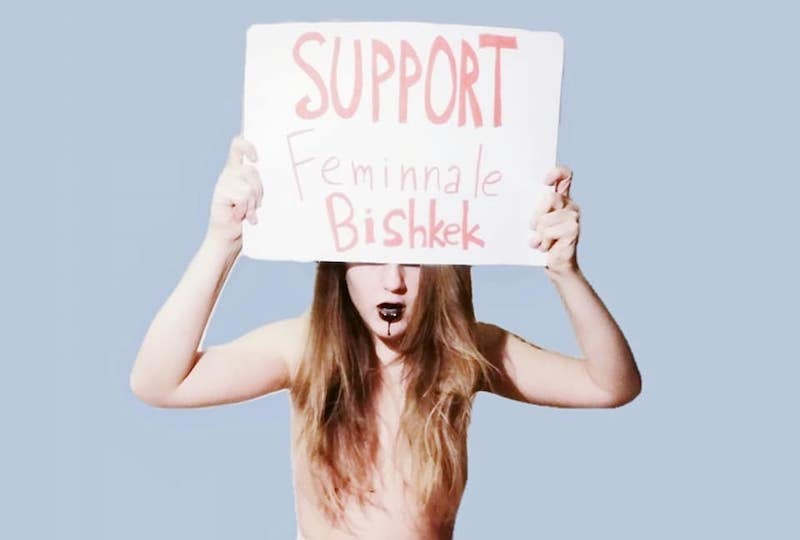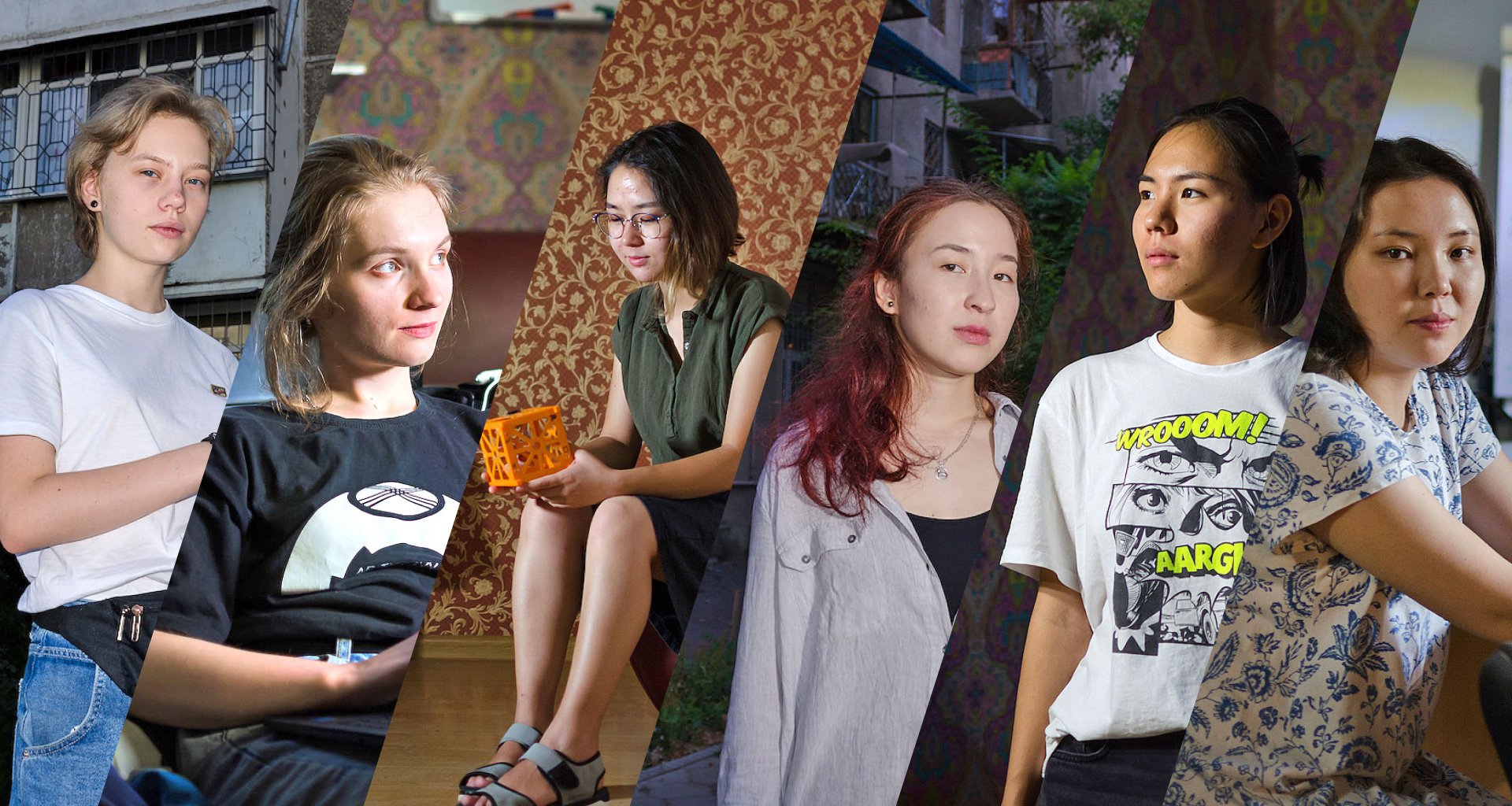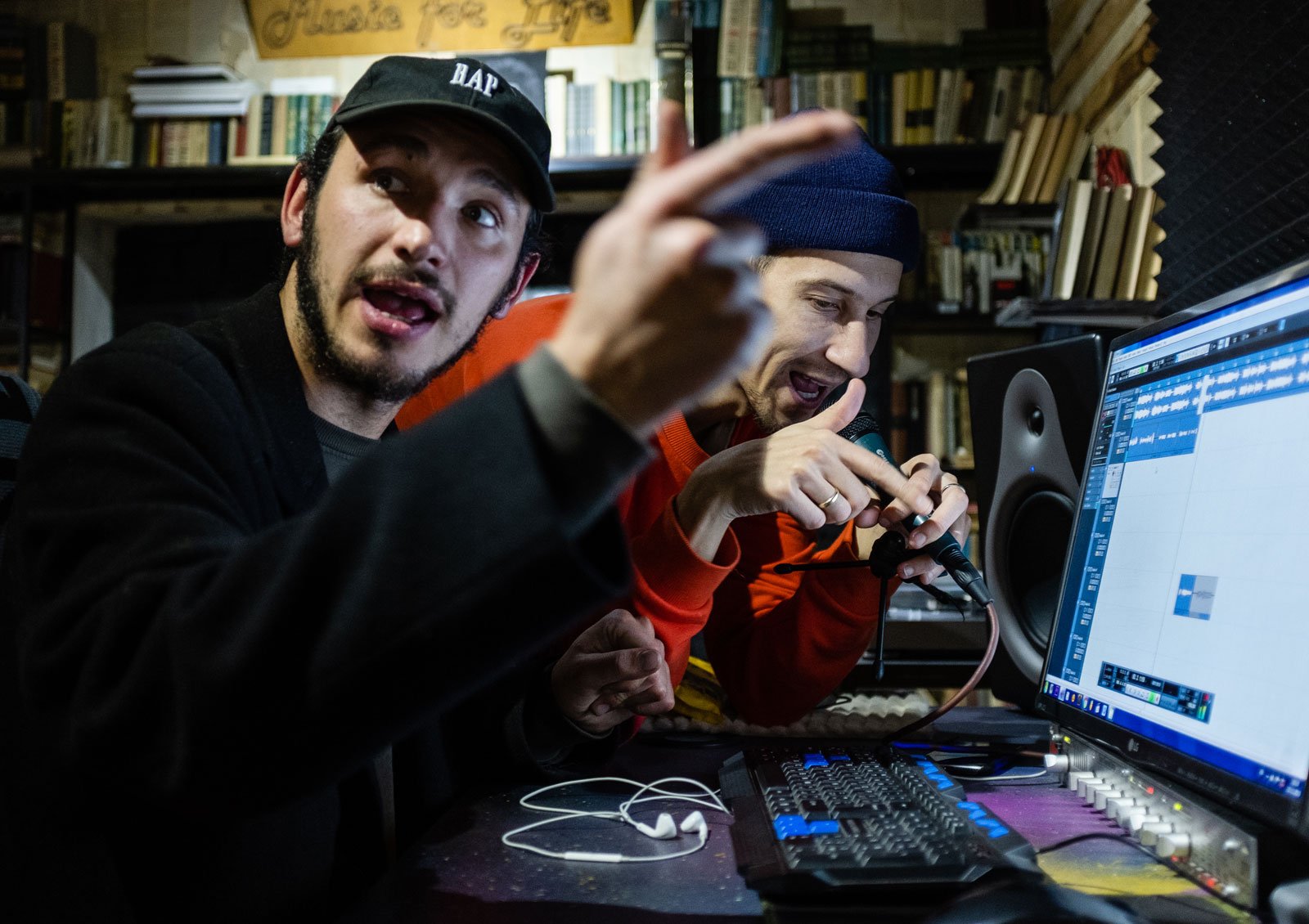12 artworks that shaped Kyrgyzstan’s art scene for the past 30 years
After The FallOver the last 30 years since Kyrgyzstan became independent from the Soviet Union, we have experienced three revolutions: on 24 March, 2005, 7 April, 2010, and 5 October, 2020. Our revolutions are often called coups and violent power changes — with good reason.
All three upheavals have revealed monstrous government corruption. Former presidents, prime ministers, mayors of the capital, prosecutors, judges, anti-corruption fighters themselves, have faced charges. Yet, paradoxically, the revolutions have largely led to the restoration of the Soviet paradigm, by returning privatised property to public ownership, for instance.
Likewise in art, the complete disillusionment with the quality and economic opportunities of commercial art have led many artists to re-embrace socialist realist techniques and themes. Leaving behind any idea of the new and the relevant, Kyrgyzstan’s “New Socialist Realism” (or social realism) involves traditional painting used to tackle topical issues, with a generally positive rather than overly-critical attitude.
It is also paradoxical that the Union of Artists, which served the interests of the Communist Party in the USSR, has now become a fully-fledged public organisation, preserving the achievements of Soviet modernisation, and preventing culture from sliding into nationalism and radical Islamisation.
Still, in addition to the return to socialist realism, for the past 30 years, Kyrgyzstan has also seen a rise in picturesque postmodernism and contemporary art, not to mention to the monumental propaganda commissioned by politicians.
Below, I am sharing a selection of works that have had an impact on the recent cultural history of Kyrgyzstan.
Stop, 1995-2000
Aktan Abdykalykov and Ernest Abdyzhaparov
This 22-minute video artwork is a play on words: a stop is a bus stop, and a stop throughout life. The first 10 minutes have no plot, illustrating the incomprehensibility of what is happening in the country, the sense of indecision, and the general unwillingness to take any action. The plot in the second half of the film then contradicts this notion, and seems like a trick. While the first part of the video reveals the spontaneous use of contemporary art techniques, the second part denies the validity of these methods.
Conceiving the film in 1993, shooting it in 1995, and editing it for a long time, until 2000, the filmmakers were not sure whether they even needed to complete the work. This says something about both the artists, and the state of art at that time.
The 90s were the years when the state studio KyrgyzFilm had nothing: no materials, money, electricity, heating, scripts, and specialists.
The authors of this film likewise had no budget and no professional actors — they just filmed themselves. However, Aktan Abdykalykov and Ernest Abdyzhaparov did not pursue this line, and instead became successful traditional directors.
A point for the hero. An object, 2001
Ulan Japarov
Architect and leading contemporary artist Ulan Japarov’s work A point for the hero. An object is a clay toilet created on the top of a hill. It invites the viewer to sit on it, and admire the landscape. The work thus involves the beauty of nature — the pride of the country — and makes a point: it’s necessary to create the proper infrastructure not only for grand public holidays, which our bureaucrats love so much, but also to address everyday needs. This is contemporary art: a simple appeal, disguised as shocking irony.
Trans-Siberian Amazons, 2004
Gulnara Kasmalieva and Murat Dzhumaliev
This three-minute video installation featuring typical market bags reflects on the developments following the collapse of the USSR. Small smugglers, “Amazons of wild business”, travel in trains across the endless expanses of the former Soviet Union, to sell mostly cheap Chinese goods. Life does not allow them to be weak, they endure physical exertion, fatigue, and humiliation. And to the sound of the wheels, they sing a hit of the Soviet era: “I know, dear, I know what’s wrong with you…”
Alai Queen, 2005
Yuristanbek Shigaev
The bright orange background is filled with art references from across the world, from the glamorous lamp on the left hand side that seems to be taken out of Picasso’s Guernica, to the ancient Egyptian-like black figure on the right. Depicted here is 19th century queen Kurmanzhan Datka, a tragic figure in the formation of Kyrgyz statehood, with the harmony and calm of an ancient goddess on her face. A hunting falcon sits on her hand, as a sign of her power; the panther next to her represents the inviolability of the state. On the right, the composition includes a black figure, perhaps standing for the fragility of established ideas, and fate’s predetermination. The composition is well balanced: on the one hand, there is a pacifying submissiveness, on the other — the harsh inevitability of change. The symbols and references are all characteristic features of Kyrgyz pictorial postmodernism.
Restructuring, 2005
Shailoo Dzhekshenbaev
This four-photo series shows the 2005 replacement of the Soviet-era asphalt road surface surrounding the Lenin monument in the square of Bishkek’s Polytechnic Institute. Dzhekshenbaev, a master of the paradox, managed to create a symbolic image of the destruction of the usual way of life, without dramatising it. There will always be change, and people will always rebuild, adapt, and solve urgent problems. In this case, until this construction waste gets removed, people just need to find their ways amidst the ruins.
I bow to the East, I look to the West, 2008
Talgat Asyrankulov
In this series of four photographs, the artist looks as if he is praying at first, but then he suddenly stands on his head in a yoga pose. This portrait of the artist represents his generation, formed during the USSR. Asyrankulov graduated from the prestigious Institute of Cinematography in Moscow in 1989, specializing in film design. He successfully managed one of the first independent TV channels in Kyrgyzstan.
His generation enthusiastically welcomed democratic changes, and actively participated in the destruction of the totalitarian system. But they could not change themselves. Used to living with a split conscience between what they thought and what they were allowed to say and do in the Soviet Union, many people of this generation continue to be conflicted. With today’s openness, freedom of choice, and opportunities, they are torn between several cultural paradigms. In my opinion, this work is not about tolerance but about the inability to make a choice, and be ironic rather than worried about it. An atheist education allows the combination of morning prayer with exercise, as a joke.
Performance with a tree, 2013
Group 705
In the centre of Bishkek, a foundation pit still stands in a green park, left over from an illegal development in the 2010s. The authorities saw what was going on, justice prevailed, and the corrupt officials who allowed the construction were punished. But the hole itself stayed. The authorities didn’t fill it in, nor plant trees. To draw attention to this absurd situation, the art collective Group 705 gave a performance in the pit in 2013. Everything was done with great care: the members of the group went down to the bottom of the hole with shovels, read a text to the beat of a drum, and then planted a single tree. The audience watched what was going on, but no one understood a thing. Nor did the performance solve the problem. The pit still has not been filled in, and the square has never been restored.
Monumental Complex on Ala-Too square in Bishkek, 2011
Bazarbek Sydykov and Sooronbai Beishenbaev
Post-independence Kyrgyzstan has seen a boom in monumental sculpture. This phenomenon can be called “Monumental Propaganda 2”, if we compare it to Lenin’s plan of monumental propaganda. The movement represents an addition, clarification, and rewriting of history by means of monumental sculpture.
In 2011, after the second Kyrgyz revolution, and the fall of Kurmanbek Bakiyev’s regime, a new monumental sculptural ensemble rose on the central square of Bishkek, replacing the post-1991 Independence statue, and the Soviet-era Lenin monument. One statue of the ensemble depicts Manas the Magnanimous, the protagonist of the great folk epic Manas, standing as a symbol of tradition. The other monument, celebrating the world famous writer and humanist, Chingiz Aitmatov, represents the modernisation of our culture.
I’ll cut it! — a joke, 2017
Zhakypov Zhylkychi
This installation of six paintings (print, oil) depicting a horse’s head is a joke about a popular movie launched that year: Centaur, by Aktan Abdykalykov. In this film, the main character, concerned about the moral and ethical state of society, reproaches the Kyrgyz for allegedly eating horses - noble and pure creatures - and says that as a result the country is paying for their sins. Yet still the Kyrgyz continue to slaughter horses, and the director laments this. Also, in the Soviet tradition, he hectors his audience on the subject of “world peace”. In response, the painter criticises Abdykalykov’s over-moralistic style.
Fatigue, by Innokentieva Nyurguyan, 2020 and Doctors against the coronavirus, Usubaliev Taalaibek, 2020.
Both of these oil paintings, shown at the New Socialist Realism exhibition at the Gallery in December 2020, reflect on the Covid-19 pandemic. In the first work, Fatigue, the doctor depicted is just tired. There is no feigned pathos here. This person does not have the strength to report on the work done and or seek any reward. In Doctors against the coronavirus, Usubaliev Taalaibek, a painter who embraced socialist realism in the Soviet era, paid tribute to the frontline workers of the pandemic — and not to the officials, which would have made it a more propagandistic work. With a great sense of composition, the artist takes a strong civic stance, showing the doctors who have been saving lives during Covid 19.
Tomb of the Fathers, 2021
Usubaliev Taalaibek
Ata-Beyit is a memorial complex located 25 kilometers south of Bishkek, in the town of Chon-Tash, at the foothills of the Kyrgyz ridge. This is a sacred place for every citizen of Kyrgyzstan. So, in this painting, all the six presidents who have ruled the country for the past 30 years meet together, and repent. In fact, such a situation is impossible, because these political leaders are old enemies. This is the fantastic element of a realist painting, which depicts the clearly recognisable figures of the presidents. These politicians would not be able to put their differences aside, and get together, and pray for the Kyrgyz Republic and its people, however much we would like them to.
.jpg)
.jpg)
.jpg)
.jpg)
.jpg)
.jpg)




